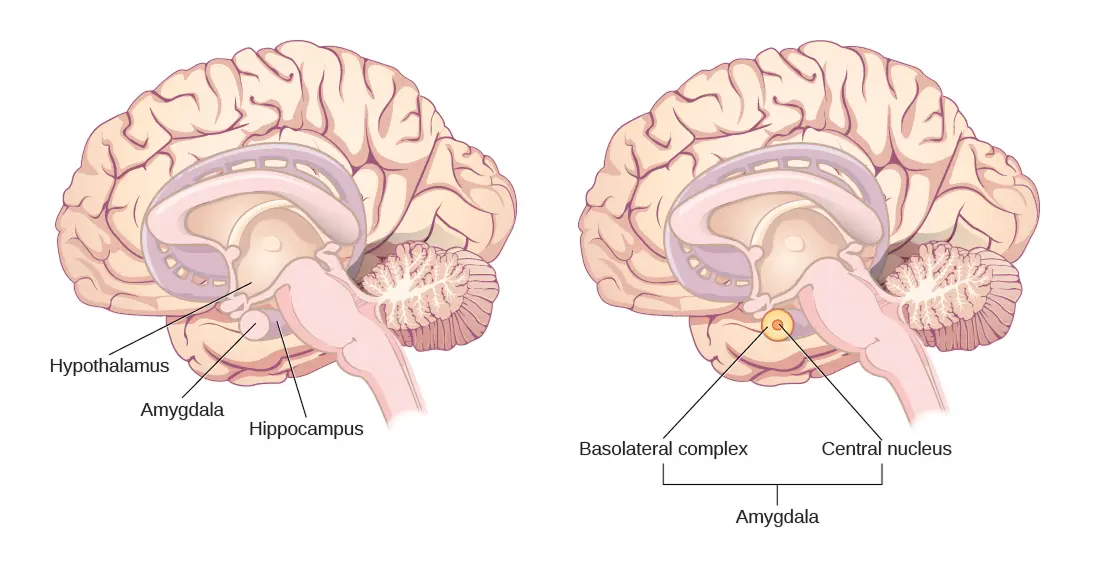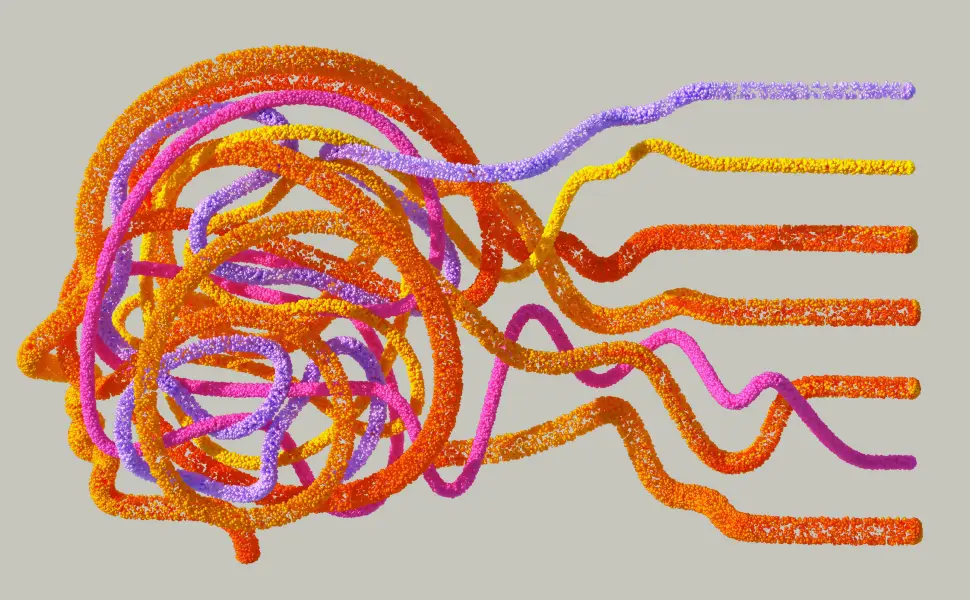Definition
The amygdala is a pair of almond-shaped nuclei located deep in the temporal lobes, forming part of the limbic system, the brain’s emotional network. It acts as an emotional processing hub, evaluating sensory information for its emotional importance and coordinating responses such as fear, arousal, and reward anticipation.
Key components:
- Basolateral nucleus: Integrates sensory input from the cortex and helps form emotional memories.
- Central nucleus: Sends signals to autonomic and endocrine systems, triggering physiological responses (e.g., increased heart rate, pupil dilation).
- Cortical nucleus: Involved in processing olfactory and social cues.

The amygdala interacts closely with the hippocampus (memory formation) and prefrontal cortex (cognitive control), creating a bridge between emotion, memory, and decision-making.
Core Functions
1. Emotional Detection and Appraisal
The amygdala rapidly evaluates stimuli for emotional value, detecting whether something is threatening, rewarding, or socially significant.
Example: A loud unexpected noise immediately draws your attention before conscious thought, your amygdala has already reacted.
2. Arousal and Attention
Activation of the amygdala boosts alertness through connections with the locus coeruleus and autonomic nervous system. Emotional stimuli are prioritized for attention, ensuring survival-relevant information is processed first.
3. Emotional Memory Formation
The amygdala strengthens the storage of emotionally charged events by modulating hippocampal activity. This is why highly emotional experiences, such as accidents, celebrations, or impactful ads, are remembered more vividly than neutral ones.
4. Social and Motivational Processing
It decodes facial expressions, tone, and social signals, enabling empathy and social judgment. This function extends to consumer contexts, helping explain why emotionally expressive ads capture more attention.
5. Regulation and Adaptation
While the amygdala triggers emotional responses, the prefrontal cortex modulates them, allowing flexible, context-appropriate behavior. This balance is crucial for emotional regulation and decision-making.
Function in Neuroscience and Neuromarketing
In neuroscience, the amygdala is studied for its role in fear learning, emotional regulation, and psychopathologies (e.g., anxiety, PTSD).
In neuromarketing, it’s central to understanding how emotion drives attention and memory:
- Ads that evoke surprise, curiosity, or mild fear activate the amygdala, increasing engagement and recall.
- Emotional “contrast” (tension and release) sustains attention and strengthens brand associations.
- Over-activation, however, can lead to avoidance, a reaction seen in overstimulating or disturbing content.
Example
In a fear conditioning experiment, a neutral tone is paired with a mild shock. Over time, the tone alone triggers a fear response, sweating, heart rate increase, because the amygdala learned to associate the sound with threat.
In advertising, this mechanism translates differently:
A suspenseful Halloween commercial builds tension (amygdala activation), then resolves with humor or relief. The emotional “peak and release” boosts both attention and memory encoding, making the ad more memorable and the brand more distinctive.
In essence
The amygdala is the brain’s emotional amplifier, signaling “pay attention” when something meaningful, exciting, or threatening occurs.

.webp)

.webp)


